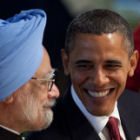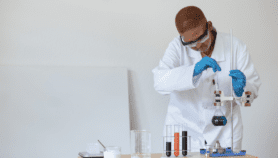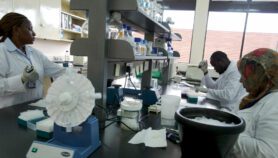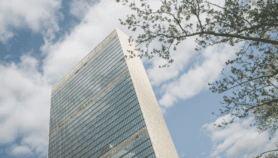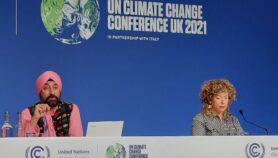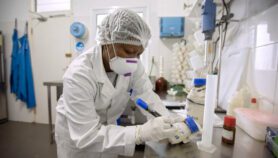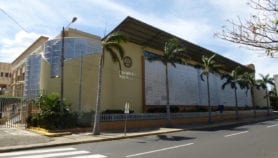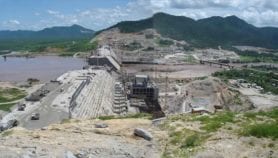By: Mićo Tatalović
Send to a friend
The details you provide on this page will not be used to send unsolicited email, and will not be sold to a 3rd party. See privacy policy.
SciDev.Net asks Cathleen Campbell, head of the US Civilian Research Development Foundation, about Obama and US science diplomacy.
The US Civilian Research Development Foundation (CRDF) is a non-profit organisation that promotes US science diplomacy efforts around the world, under the banner "peace and prosperity through international science collaboration".
It recently launched Global Innovation through Science and Technology, a two year programme for strengthening science ties with Muslim majority countries that builds on proposals announced by US president Barack Obama in Cairo in 2009.
Now the president has visited Indonesia, a country he has targeted for science diplomacy efforts.
SciDev.Net asked CRDF’s chief executive officer, Cathleen Campbell, what diplomacy means in this context.
Is ‘science diplomacy’ any different from ‘science and technology collaboration’?
I define science diplomacy as utilising science and technology (S&T) collaboration to establish positive, productive and prolonged collaborations that strengthen international ties. It builds on a long history of international S&T cooperation that organisations like CRDF have been implementing for years. But it focuses on the importance of strengthening ties between countries and working to solve real problems.
In my view, the components of science diplomacy include: educating policymakers and the public about the importance of international science cooperation; ensuring that science cooperation is a key component in foreign policy agendas; empowering scientists and engineers by creating opportunities for cooperation; and evaluating impacts.

NOAA and Indonesian ships collaborated on a research voyage this summer as part of Obama’s science diplomacy focus on Indonesia
Flickr/epiro
Isn’t the ultimate aim of science diplomacy to advance Western business interests?
No, I wouldn’t say that. I think it’s very much a win-win situation. We work in partnership with scientists and engineers to identify what the needs are and develop programmes that are relevant.
Do you know of examples where science diplomacy has demonstrably achieved peace or prevented a breakdown in a relationship between countries?
The underlying premise is that science and technology are very effective tools for engaging societies and people from different countries, including situations where there may be political tensions or isolation, because scientists and engineers share a common language and common values that can transcend political differences.
But S&T is inherently long term, so the results that we are going to see are often many years out.
We do know from looking back at history that there is evidence that maintaining science ties between US and Soviet scientists throughout the Cold War was a very important foundation on which to build collaboration rapidly when the opportunity arose — when the Soviet Union ceased to exist.
Recently, we ran a research competition with partner organisations in Armenia, Azerbaijan and Georgia for projects that required collaboration among researchers from all of these countries.
It was very difficult to get Armenian and Azerbaijani citizens to work together, but through this competition we received numerous applications for collaborations between Armenian and Azerbaijani scientists and we were able to fund a couple of joint research projects, such as on mineral resources in the region.
What are your measures of success?
If it’s a collaborative research project we certainly look at the quality of the science, whether or not there are publications in international peer-reviewed journals or presentations at scientific conferences.
We are also very interested in trying to track whether or not the relationships continue beyond the life of our grant. We have found that the majority of scientists that we fund do continue their partnership in one form or another after the project lifetime.
If the work is focused on entrepreneurship then we might be more interested in looking at whether the technology developed gets picked up by a company or an investor.
If we’re building a sustainable organisation, such as the four foundations we established in Moldova, Armenia, Azerbaijan and Georgia, we’re interested in the long-term sustainability of those institutions and whether or not they continue beyond the life of CRDF funding. I’m happy to report that these four institutions have continued.
Another example is the Iraq Virtual Science Library, which has been very successful in increasing the access that Iraqi researchers have to scientific publications. We’ve seen a steady increase in the number of users of this library, but the great thing is that we recently handed over responsibility for managing it to the Iraqis. A good indication of the sustainability of a project is that it has been picked up by the user community.
Do you run the risk of raising the expectations of people in the developing world that you cannot meet — and how do you deal with this?
With science diplomacy it’s very, very important to back up talk with specific actions. We need to educate policymakers and the public about science diplomacy and to build support for it within the foreign policy community, but this definitely has to be matched with concrete action and follow-up.
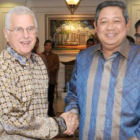


US science envoy, Bruce Alberts, met Susilo Bambang Yudhoyono, the president of Indonesia, the largest Muslim population country, in May
US State Department
President Obama cancelled two previous science diplomacy trips to Indonesia, and no significant funds have been committed since his Cairo speech in June 2009 when he pledged to boost science ties with the Muslim world. Has it been reasonable for some to question whether they can expect any concrete commitment from the United States?
This is a very important issue and I think it’s fair to say that I, like many others, would have liked to see things move more quickly than they have.
We’re going to do our part to continue to push. I think it’s important that there will be dedicated funding provided for some specific activities — you have to have some meat to go with the rhetoric. And we’re going to do everything we can to continue to push for funding to support follow-on activities.
I’m happy to say that CRDF has been working with Muslim-majority countries and we are continuing to do so. Global Innovation through Science and Technology is focused on these countries with a variety of science cooperation programmes, and is directly linked to the president’s speech in Cairo last year.
We have also sent a team to North Africa to talk about developing digital libraries in the Maghreb countries, and I have a staff member scheduled to go to Indonesia to begin discussion about possible activities.
These are just first steps; there’s tremendous need and opportunity and we’re looking forward to identifying good partnerships where we can work together on mutually beneficial programmes.
This can’t be just the United States: it’s got to be partnerships with the countries in the regions and I do look forward to identifying and working with a number of organisations to expand S&T cooperation.
Critics of the US science diplomacy drive say that overseas scientists often cannot get visas to study in the US. Is this an issue?
This has been a long-standing problem and we hear this often in all of the science and technology cooperation that we support. I really do hope that it will be easier for scientists to travel back and forth and collaborate, and CRDF will continue to be a voice and relay our experience to the US government in the hope that it will make some changes.
For science to be successful you have to get scientists together.
Another common criticism is that US science diplomacy efforts are fragmented across different organisations — would you agree with this?
Yes, work is spread across multiple agencies and that’s always been a challenge in terms of coordinating the US government’s international S&T cooperation. It seems that the best home for science diplomacy is in the State Department and I think we’re going to continue to see more leadership there on science diplomacy issues and coordination across government.
The White House Office of Science and Technology Policy is also very committed and is continuing to play an active role.
Effective science diplomacy needs public-private partnerships and active involvement of non-governmental organisations such as CRDF.
We have worked with similar organisations such as the American Association for the Advancement of Science, the National Academy of Sciences and the Partnership for a Secure America [a bipartisan centre for American national security and foreign policy], to educate policymakers and the public about the importance of this issue, raising visibility within Washington and around the country.
We did that by pulling together a number of leading scientists and diplomats to issue a joint statement on the importance of science diplomacy and foreign policy. We will continue to pursue this in partnership with like-minded non-governmental organisations and will work with the private sector to get it interested and engaged, while we continue to work with our counterparts in the government as well.


